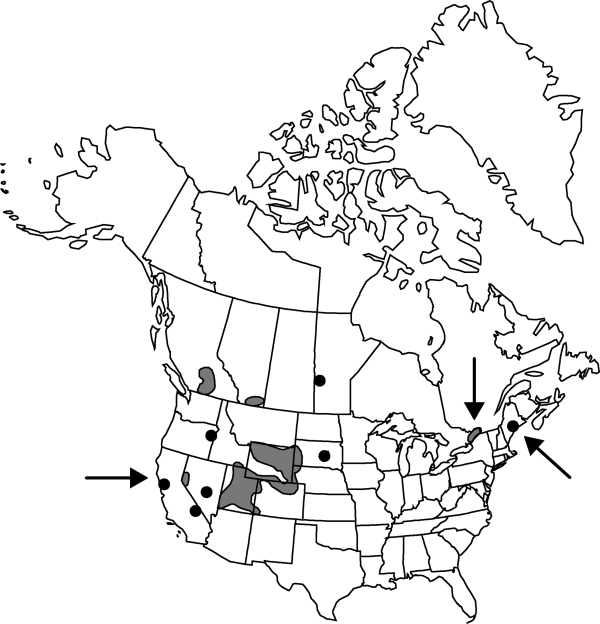Atriplex heterosperma
Beitr. Fl. Russl., 272. 1852.
Herbs, monoecious, erect, branching from base, mostly 5–15 dm. Leaves alternate except proximalmost; petiole 2–3 cm; blade green on both sides, triangular to lance-triangular, 30–120 × 12–90 mm, hastate or subcuneate, margin subentire or irregularly dentate, farinaceous at first, finally glabrous. Flowers in terminal or axillary pyramidal panicles 6–25+ cm. Staminate flowers 5-merous, with bracteoles free to base. Pistillate flowers dimorphic, all bracteolate and lacking sepals. Fruiting bracteoles orbiculate-ovate, of 2 sizes; larger ones 5–6 × 5 mm; smaller ones 2 × 2 mm, margin entire, surfaces smooth. Seeds vertical; of larger bracteoles yellowish-brown, flat, 2–3 mm wide, dull; of smaller bracteoles black, 1.5 mm wide or less, shiny; radicle inferior, basal. 2n = 36.
Phenology: Flowering summer–fall.
Habitat: Riparian and palustrine (less commonly ruderal) habitats
Elevation: 0-2000 m
Distribution

Introduced; Alta., B.C., Man., Ont., Que., Calif., Colo., Idaho, Maine, Nebr., Nev., N.Y., Oreg., S.Dak., Utah, Wyo., Eurasia
Discussion
Russian atriplex occurs with greasewood, saltgrass, cottonwood, tamarix, and weedy annuals. It is a handsome, vigorous ruderal, weedy annual indigenous to Europe east to Chinese Turkestan that appears to be invading saline lowland and other disturbed areas throughout much of North America. It is similar to Atriplex prostrata from which it can be distinguished by the entire margin and smooth surfaces of the fruiting bracteoles. Additionally, the leaves are thick-textured and often bear one or more lobes or teeth irregularly along the blade above the subbasal main hastate lobe. The staminate spikes when young are very slender, mainly less than 2.5 mm thick.
Selected References
None.